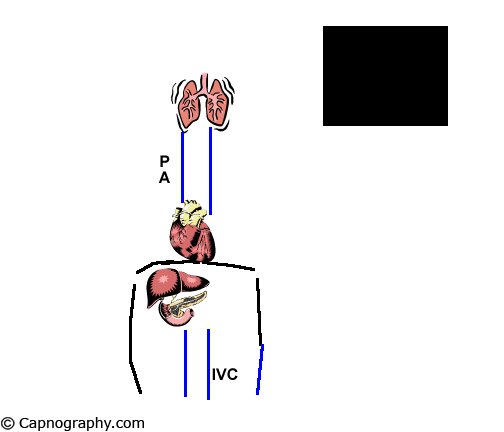
Venous CO2embolism
End-tidal CO2 monitoring is essential during laparoscopy, as it may help in the early detection of venous CO2 embolism (accidental insufflation of CO2 into the veins). In addition, CO2 is also absorbed from abdominal cavity. A transient but rapid rise in PETCO2, has been suggested as a useful early sign of venous CO2 embolism.
However, when the CO2 embolism is large enough so as to cause pulmonary outflow obstruction resulting in decreased cardiac output, PETCO2 decreases thereby increasing the alveolar dead space as well as (a-ET)PCO2 difference.
Reference:
Shulman D, Aronson HB. Capnography in the early diagnosis of carbon dioxide embolism during laparoscopy. Can Anaesth Soc J 1984;31:455-9.

 Twitter
Twitter Youtube
Youtube











